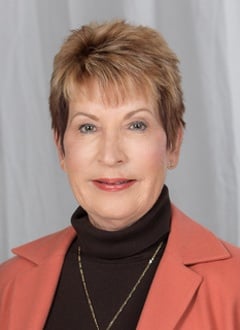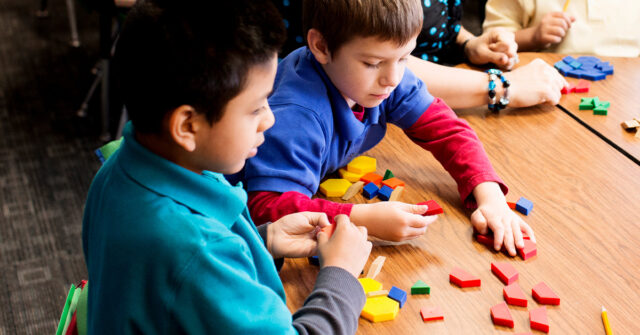
Think of your STEM journey as a highway. When you’re driving along you see those marker signs on the side of the road. These guideposts can provide direction and key information just when you need it. This is how authors Jo Anne Vasquez, Michael Comer and Joel Villegas describe how their work in STEM Lesson Guideposts is designed. They say their guideposts provide direction and key information at critical times when planning a STEM journey.
Think of your STEM journey as a highway. When you’re driving along you see those marker signs on the side of the road. These guideposts can provide direction and key information just when you need it. This is how authors Jo Anne Vasquez, Michael Comer and Joel Villegas describe how their work in STEM Lesson Guideposts is designed. They say their guideposts provide direction and key information at critical times when planning a STEM journey.
We recently talked with Jo Ann and Michael, and started our conversation on the misconceptions about what STEM actually is.
See below for a full transcript of our conversation:
Jo Anne: I think the biggest misconception is the fact that they think that all four disciplines have to be in there, but STEM is actually an integrated interdisciplinary way of teaching, and with that, what it does is give the students to apply what they're learning. I think that's the big, I don't want to say selling point, but the reason that STEM has ___ in the field with teachers who start to put their foot in the water and say "Oh, I'm going to integrate my math and science" or "I'm going to put some literature in," but it's all about application. I think the biggest misconception is that you're not going to teach the content, you're just going to do all the, you know, fun projects and problems and do all of that. You still have to teach the content.
Michael: One of the other aspects of the misconceptions are is the idea that just because I do robotics or I do coding, that I'm doing STEM, and it's not necessarily the integration of pulling the other disciplines together. Those are great activities to do. Those are great projects to do, but I think helping students to be able to see a connection to how I can apply this and how am I pulling in what other disciplines or what other fields I'm studying at the time is part of the STEM movement.
Brett: Your first book, STEM Lesson Essentials, came out in 2013 and has been incredibly popular. Have there been changes in STEM expectations since then?
Michael: Oh, I think the changes in the expectations come to more classroom teachers are beginning to look at what STEM is and look around to see that the emphasis on STEM instruction is permeating into their classroom, and so they're beginning to think "Well, how can I do this?" and "Where do I begin?" I think when the first book came out, it was more about "Well, what is STEM?" and at the district level, supervisors were talking about it. There was a lot of talk on the national stage about STEM education. It's now filtered down to where teachers are, and teachers are beginning to say "Okay. Well, what is this, and how can I do it, and how will it help my students?"
Jo Anne: I think it also provides an opportunity for teachers to have dialog with other teachers and to say "What is ... ," because everybody seems to be jumping on the STEM bandwagon. We see that. In STEM Lesson Essentials, we tried to, or we did lay out, I think very clearly and articulately, about what is STEM, the levels of STEM, so it is the what of STEM. We try to demystify it, and so the teachers would say "Oh, I can't be a STEM teacher, because I don't do this or I don't do that." Well, yes you can. If you're teaching first grade, and you're planting those plants, and you're measuring them, and you're graphing them and charting them, you're using math. You're maybe designing a place that you're going to go plant the plants when they're big, you're bringing in engineering design. We try to give teachers the confidence to say "I can be a STEM teacher."
Brett: Mm-hmm (affirmative).
Michael: In the next book, it helps the teachers to begin to think about the how. "How can I now do that based upon what I'm currently doing, what projects I'm currently working in the classroom, and what differences, what different emphasis might I take on what I currently have and make it a little bit more applicable to the students or make the application more evident or explicit to the students?"
Brett: Something that's been getting a lot of attention lately, a number of articles have referenced fewer girls are pursuing STEM fields. What are your thoughts about the obstacles or opportunities related to the gender gap in STEM?
Jo Anne: Well, I think some of the times, girls are not given the opportunities, particularly in if they do growing up as a young child, they don't play with Legos or they don't do the building or construction type of things, but I think when they get into early primary, it's very often the little boys who are given the assignment to build and do construct and et cetera. I think, as more and more teachers are finding out, that STEM is for everybody, and it can be easily integrated into their classroom, but the other piece of it is, is the whole engineering is telling girls that engineering is not for them or they're not good in math, and their mothers or, might say I "Oh, I just don't do math." Therefore, I, you know, "You don't have to worry about it, because look how successful I am," so, yes. That's what I believe.
Michael: Yeah, and I think that the challenges is to think about, you know, if math is the hurdle that they're finding is what prevents them from feeling that they could be successful in a STEM-oriented kind of environment, then it's not just the math. I mean, there are other aspects of the instruction, the integration, that they can be successful for, and I think what they should consider is what the opportunities are for them beyond that, because I could relate to a story. My son was, when he was going into college, he wanted to be a mechanical engineer, and the program was full of those. When we went to visit the school, the professor who was in charge of the department said "But we have no electrical engineers coming. We had a big crop of them years ago, and now we're only down to nine." My son really wanted to go to that school, so he chose electrical engineering, because there was the opportunity to get in, and then it moved from there.
I think that's what students should, children should think about or students should think about is what's the opportunity, and if I'm looking for a career that is going to be, have a job and have opportunities to grow in it and do a number of different things. Girls, women have that opportunity. I think it's really an open field for them, and not to let an obstacle like "Well, I'm not sure of the math part to it" slow them down, because it's not just about the math.
Brett: Well, let's talk a little bit about your new book, STEM Lessons Guidepost. How would you compare it to your first book, STEM Lessons Essentials?
Michael: Well, as Jo Anne was saying, STEM Essentials was really about the what, defining what STEM is, talking about the levels of integration, that you don't have to jump into a full project-based kind of curriculum in order to get to a STEM lesson, that you can start small, just integrating science and math together or looking at science and ELA standards, for instance, and pulling them together. The STEM Guidepost is really focusing on "How am I going to create that lesson?" We give teachers a template and a roadmap to follow and a very succinct model to follow, and I think that's, the difference is "Now that I know what it is, now how am I going to do that?" I think we've addressed that question in STEM Lesson Guidepost.
Jo Anne: I think the beauty of STEM Lesson Guideposts is, as we've gone out and done our research, as we've been field testing with teachers and working with teachers, is that we're empowering them to take their own curriculum standards and skills that they already have to teach, and how is it that you combine those together and develop a STEM lesson or a STEM unit, so it's not becoming an add-on, and it's something that then becomes very, very personable to them. Sort of, also, in STEM Lesson Guideposts, we're trying to demystify engineering. We have a couple of very good chapters on engineering design, which is the lead. We call that the driver in our STEM car.
One of them is the family is going on a road trip, and so they want to both do hiking in the desert, but they also want to visit the mountains where the snow is, so "Oh my. We need a hat, so we're going going to engineer a hat," and so having the students lay out a blueprint for the hat, et cetera. The end goal of that is to, particularly for primary teachers, to say engineering is for everybody. You, students come to it naturally, but it also, you're going to use your standards and skills, what is the math standards that you are teaching, so we give models and examples of that.
Michael: Right. We're not promoting ... It's not a curriculum that we're promoting. It's using what you're currently doing, and how could you make it better, and how could you tie the pieces of the curriculum together in a way so that the students see the interconnectedness of what they're learning. We provide models from all the different grade levels, from primary to intermediate to middle school, so that there's a lesson in there that'll help to figure out how they can do that from their own perspective, so it reaches a broader audience of teachers and supervisors.
Jo Anne: The other piece of it is that within the book, we have used the backward design, which is very familiar with many, many teachers, but you always start with "What do you want the students to know and be able to do?" and "How will you know that they know it?" It's working through that, but it's looking at, and I think that's the beauty of it, it's looking at "What do you already teach, and how can we use that and develop a STEM unit?" You don't have to buy something fancy. You don't have to import something. We're going to help ignite your fire.
Brett: What have you seen that really successful teachers or schools have done with STEM in their curriculums?
Michael: I think in truly successful district schools, or districts or counties implementing STEM look at it not just as a thing or a fad to do at one place, but it's a continuation. It's changing the entire system, and that involves not only helping to educate and support their teachers, the educators in the classroom, but to inform parents and to inform the community about what changes are occurring within the school and bringing those onboard as part of the stakeholders, invested stakeholders. We've used two chapters in the book to identify what a school has done in order to integrate the challenge of STEM and then looked at a large county system and how they've gone about bringing together all the stakeholders, because it's not just about the curriculum. It's about what opportunity lies for the students when they leave school and are looking for careers and jobs outside of school.
Jo Anne: Successful implementation in STEM schools or schools that want to use STEM, they provide their own vision for what STEM teaching and learning is about, and then they convey that vision to the parents, to the community, you know, what we are doing, because parents hear about STEM. I mean, they read about it. They hear about it. It's all over, but just exactly what it is and what does it mean to my child, which is where the parents usually go. One of the things that is in one of our chapters, we highlight a school approach to STEM teaching and learning, and it's a strong ability of the administrator to give the teachers time to collaborate and work together but also honoring that they are working for the benefit of their students.
Michael: The other thing to keep in mind, I think, and for successful schools, it's not a one and done, is that there is a period of refinement. We create a unit, a project that we do, that may have to come back at the end of it and say "How did it work? How could I make it better? What changes might we integrate?" and then, each year, come back to it to say "Well, times have changed" or "The scenario doesn't work for us this year." "What's happened in the community that we could use as a focal point for why are we studying this unit?" Successful schools and districts have an ongoing refinement process of the project. It doesn't mean we have to throw out the project and then start new, but how can I take the current event in the community, which is a paramount issue, and use that as part of the foundation to make it relevant and provide the necessity to get students involved and engaged in the process?
Brett: That's great advice. If a teacher is listening to this right now, and they're wondering, you know, how to fit something in, how to fit STEM into their classroom tomorrow, how would you guide that teacher? Even in the smallest possible way, where could they start to design a STEM lesson right away?
Jo Anne: A nice way to start is looking at their science curriculum that they are already teaching, and the example that we use in the book is Killip School, third grade, and it, they teach force and motion in third grade. They took that, and what other kinds of things could you integrate with force and motion, so looking at what you're teaching and thinking about what might be something that you could use. I've also seen teachers that they're teaching a geometry unit in third grade, and their teaching different rectangles, spheres, et cetera, and one of the examples that was, it's not in the book, but one of the examples we knew when we worked with one of the teacher groups was the public library was going through a re-, a refurb- ...
Michael: Renovation.
Jo Anne: ... a renovation, and that renovation, then, they were using to have the students go to think about "Well, what kind of architecture would go in there? What do we need? What kind of tables?" They took the geometry that they were learning, and they were applying it to a different situation. I think the key here is also to look in your community, find out what your community is doing to make it relevant, and then also being not afraid to you do it this year, don't throw it out. Let's refine it next year and keep working on it and making it better.
Michael: Yeah. I think that the heart of what you were saying, about the example about the library, is to ask yourself the question "Why should they know this?" Right? When I taught middle school, the it was "Why do I have to know this Mr. Comer? Why do we care about this?" If I can't answer that question for them, then there is no purpose for learning that, and so if I was going to start to think about a STEM unit, the first question I want to know is out of the standards that I'm teaching is "Where would they use this in real life?" Using that example in real life, connecting it to the learning, is the start of beginning to develop your STEM unit or STEM lesson.
Jo Anne: I also feel that teachers need to take a deep breath and say you don't always have to do a big fancy project at the end of your lesson. It can be as simple as a presentation, the students develop a presentation for what they've been working on.
Michael: Right, and I think the, you know, with the new common core standards for ELA and mathematics and the new science standards, they have a lot of common skills, or what they now refer to as the practices, that overlap each other, and so it's not as if these are individual skills that are learned within a single discipline, but they overlap each other, and there's an overarching kind of approach that teachers can take in developing curriculum or looking at existing curriculum to say "Where do I use that skill in other places, and is the skill something that I can use as the thread to tie the lessons together?"
 Jo Anne Vasquez, Ph.D. is Vice President and Program Director of Arizona Transition Years’ Teacher and Curriculum STEM Initiatives at the Helios Education Foundation. Jo Anne has been a classroom teacher, district science specialist for Mesa Public Schools, adjunct professor of science education at Arizona State University, and director of professional development and outreach for ASU’s Center for Research on Education in Science, Mathematics, Engineering and Technology (CRESMET).
Jo Anne Vasquez, Ph.D. is Vice President and Program Director of Arizona Transition Years’ Teacher and Curriculum STEM Initiatives at the Helios Education Foundation. Jo Anne has been a classroom teacher, district science specialist for Mesa Public Schools, adjunct professor of science education at Arizona State University, and director of professional development and outreach for ASU’s Center for Research on Education in Science, Mathematics, Engineering and Technology (CRESMET).
Michael Comer’s dedication to teaching was fostered by his early experiences at Assumption School in Peekskill NY. He carried that passion into his own professional career teaching middle school science. His work with classroom educators providing hands-on training and professional development workshops led to an invitation to work with the Ministry of Education in Saudi Arabia on improving their science instruction. Michael is coauthor (with Jo Anne) of Developing Visual Literacy in Science K-8 (NSTA Press). Currently he is the National Marketing Manager for STEM at McGraw-Hill and is the proud father to Brett, Toby and Elyse (who also share his passion for learning).
Joel Villegas has 18 years of experience in education with a focus on STEM integration and professional development. A dynamic presenter, he speaks frequently at both local and national conferences.
Follow him on Twitter @Villegasjoel8.
Click here for more information: STEM Lesson Guideposts


